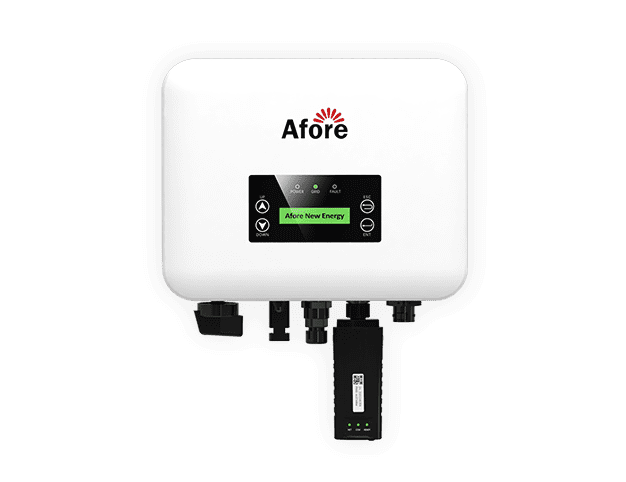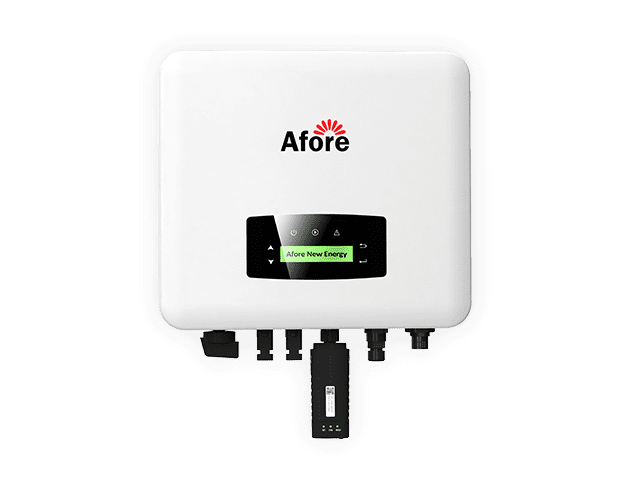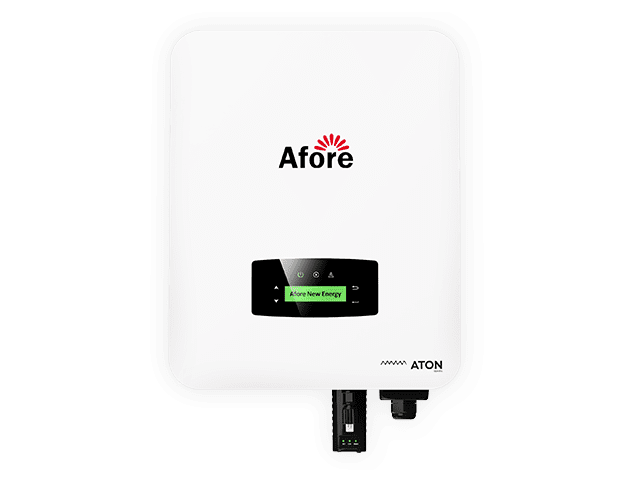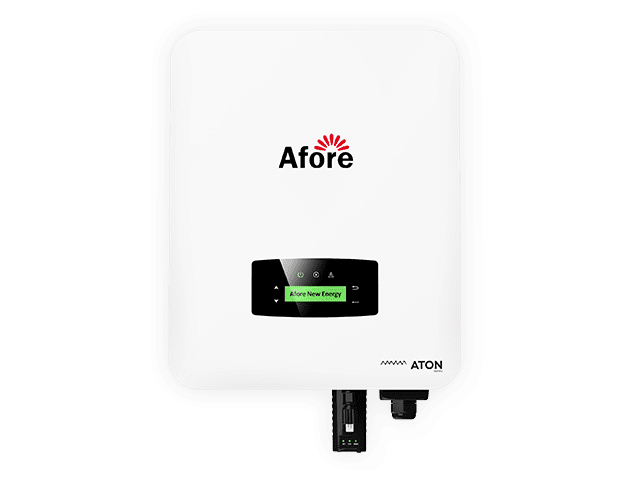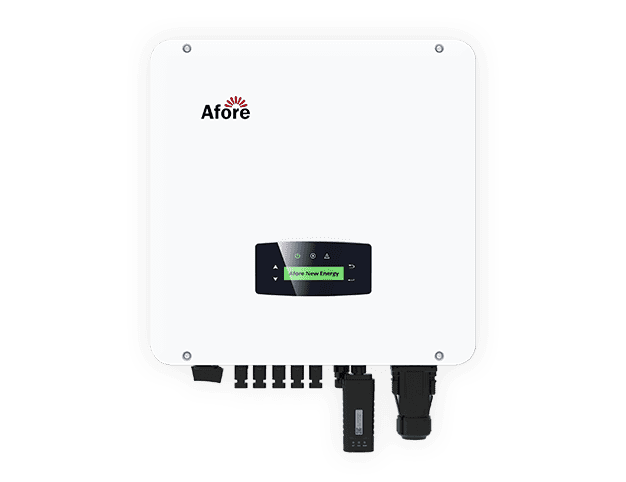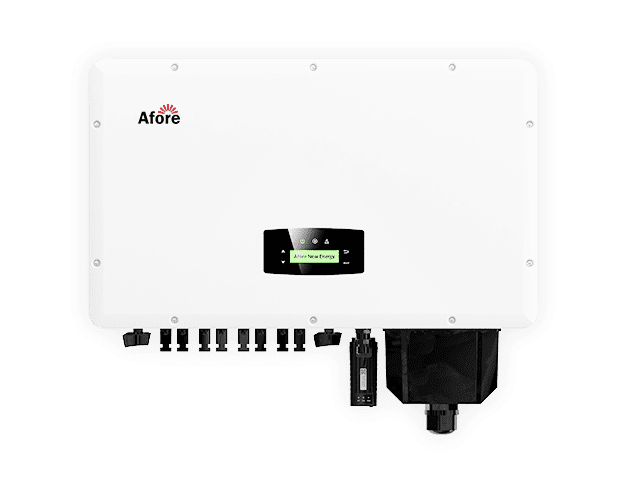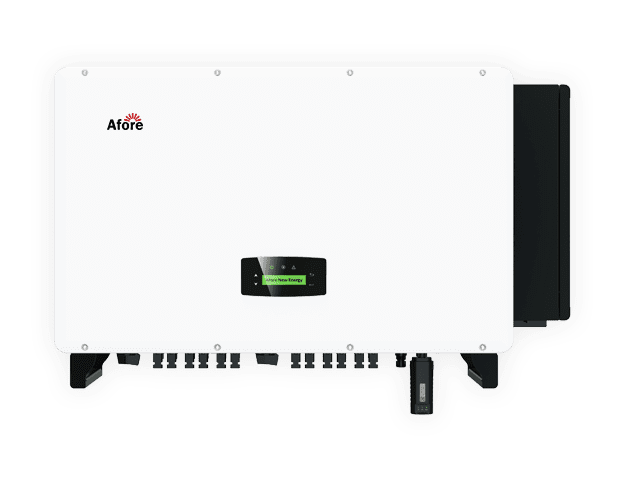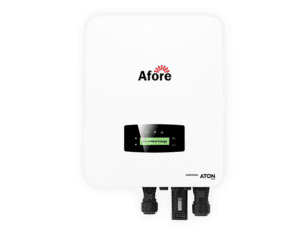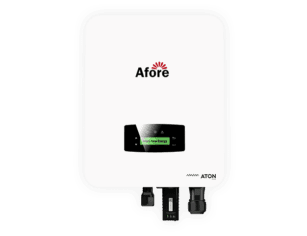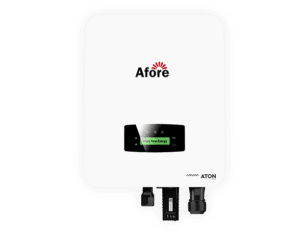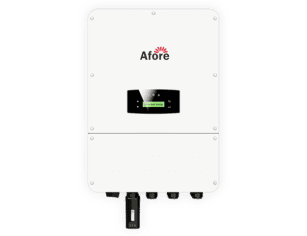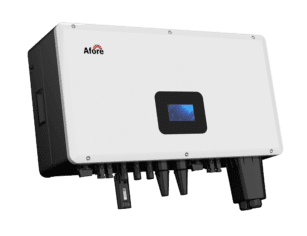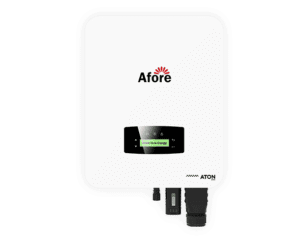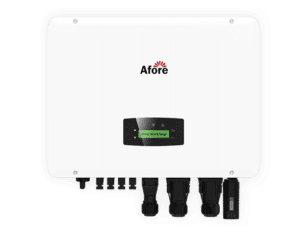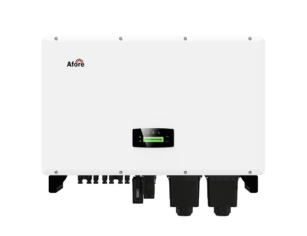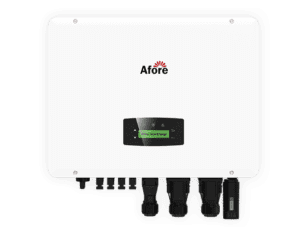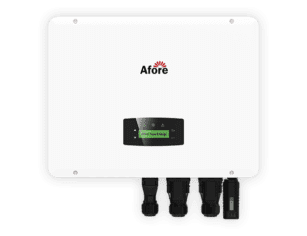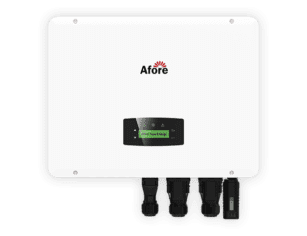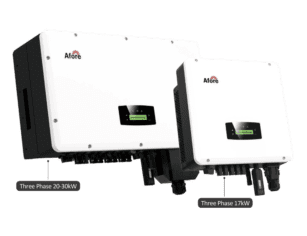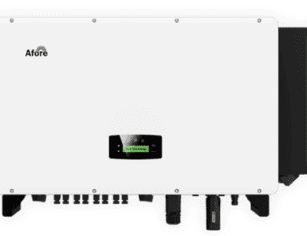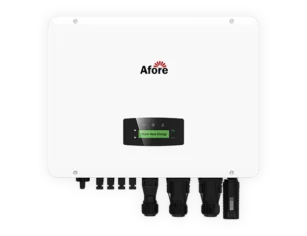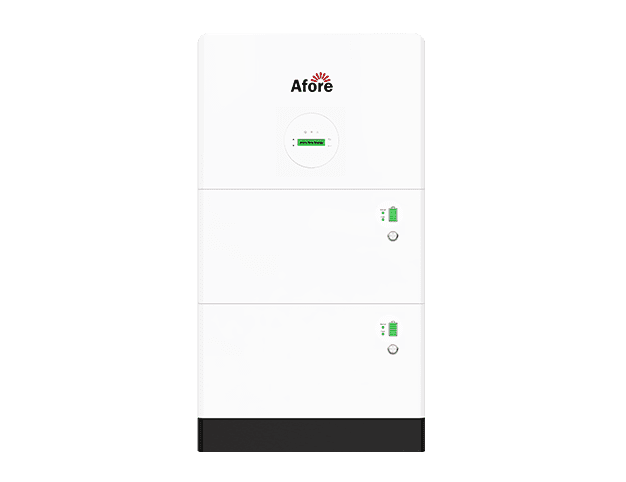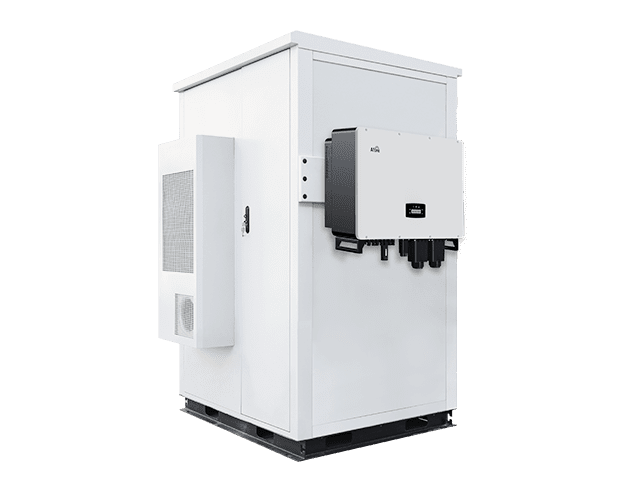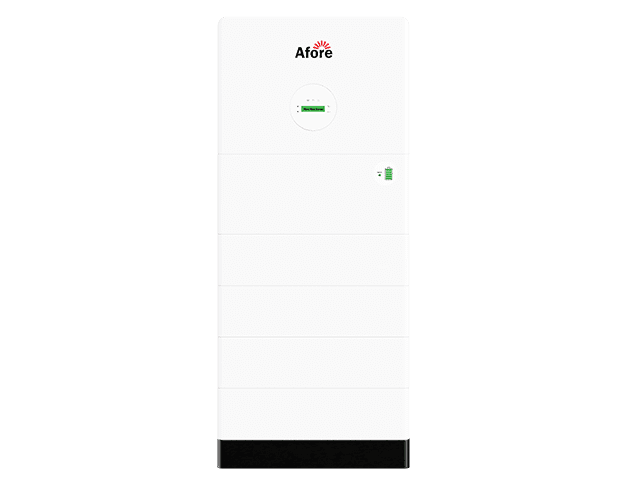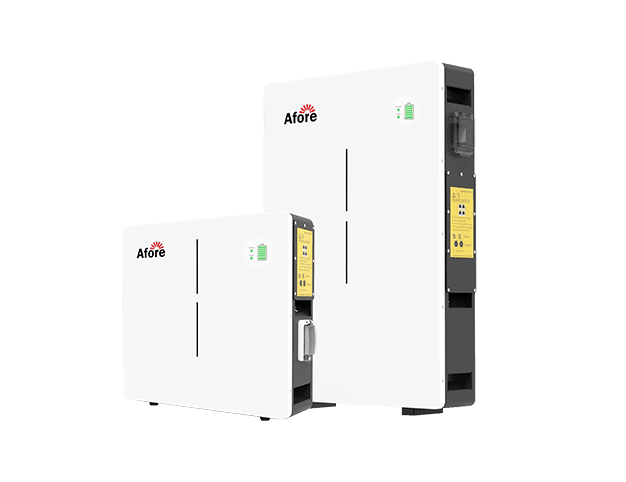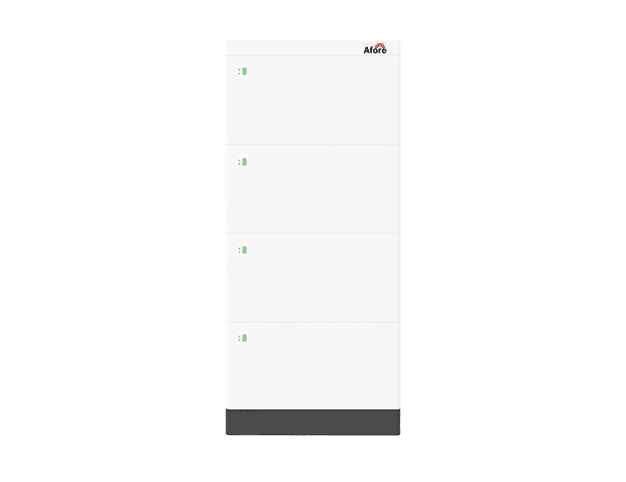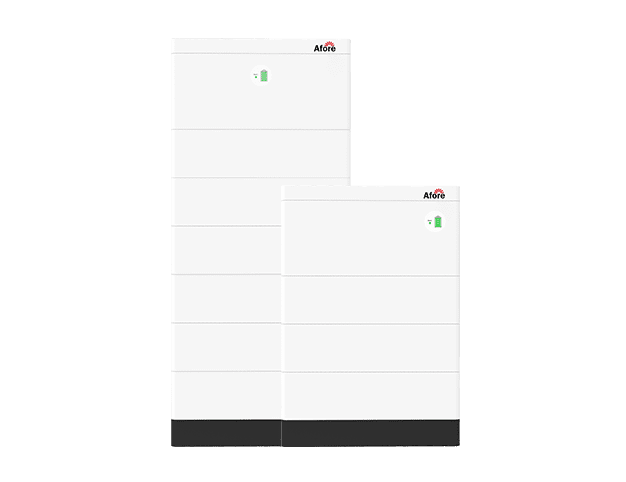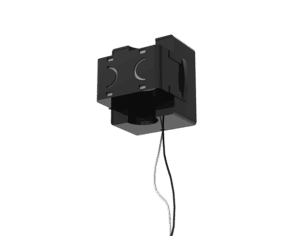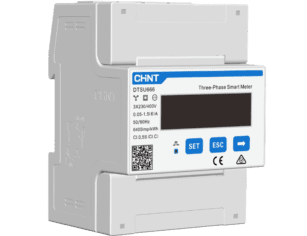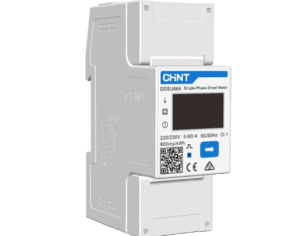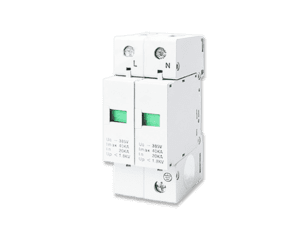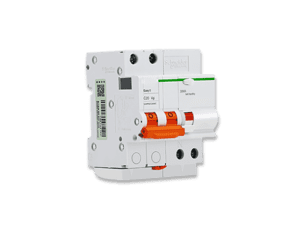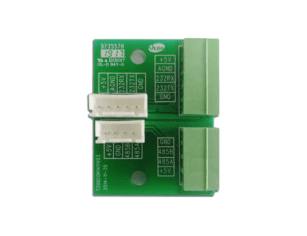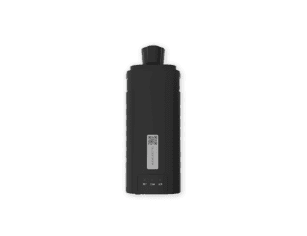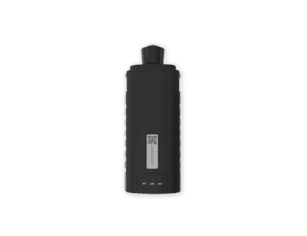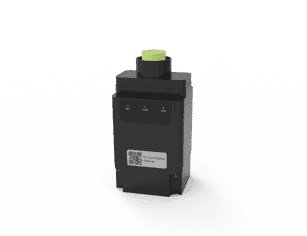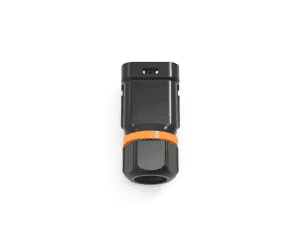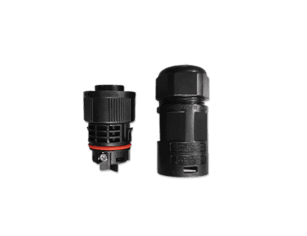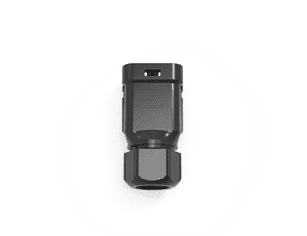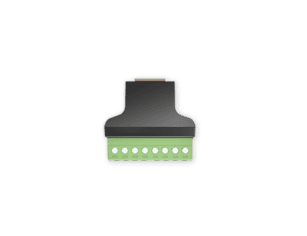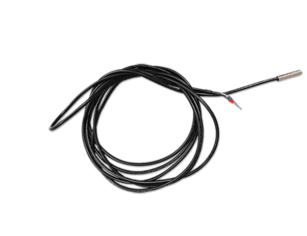Kompletny przewodnik po falowniku LF o mocy 3 kW: moc, rozmiar baterii i przypadki użycia
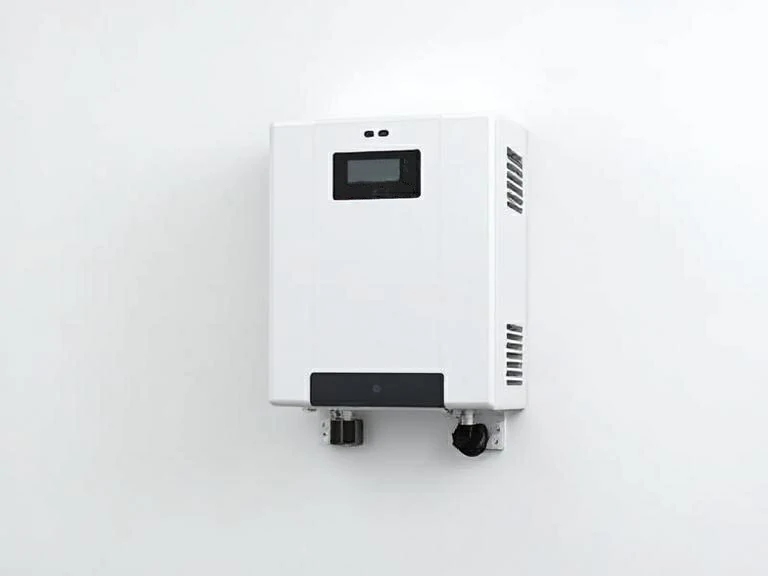
Spis treści
Falownik LF o mocy 3 kW to jeden z najlepszych wyborów, jeśli chodzi o niezawodne źródło zasilania poza siecią lub awaryjne rozwiązanie zapasowe! Niezależnie od tego, czy instalujesz system solarny w celu uzyskania samowystarczalności, czy też przekształcasz swój kamper w mobilny dom, posiadanie odpowiedniego falownika ma kluczowe znaczenie. Nawet jeśli chcesz tylko zabezpieczyć swój dom przed przerwami w dostawie prądu, wybór odpowiedniego falownika nadal powinien być najwyższym priorytetem! To prawdziwy slugfest w swojej klasie, a dziś przyjrzymy się każdej z zalet 3kW LF i zestawimy go z innymi 3000-watowymi konkurentami na rynku.
Co to jest falownik LF o mocy 3 kW?
Ten niskoczęstotliwościowy falownik o mocy 3 kW jest naprawdę znakomity! Z łatwością przekształca prąd stały (DC) z akumulatorów lub paneli słonecznych w prąd zmienny (AC), którego używamy na co dzień do zasilania różnych urządzeń i systemów elektrycznych w domu. Liczba „3kW” oznacza, że może on wytworzyć do 3000 watów mocy, co jest bardzo dużą mocą. „LF” oznacza niską częstotliwość i odnosi się do unikalnej technologii produkcji.
Przyjrzyjmy się bliżej działaniu tego niezwykłego urządzenia i dowiedzmy się, dlaczego jest ono tak popularne w niektórych przypadkach.
Definicja i podział „3kW”
„3kW” w inwerterze 3kW lf odnosi się do maksymalnej ciągłej mocy wyjściowej, jaką może zapewnić inwerter. W prostych słowach oznacza to, że falownik jest w stanie dostarczyć 3000 W mocy. Jest to wystarczająca moc do zasilania szerokiej gamy urządzeń i systemów. Od podstawowych urządzeń gospodarstwa domowego, takich jak światła, wentylatory i lodówki, po bardziej energochłonne urządzenia, takie jak elektronarzędzia i kuchenki mikrofalowe. Falownik lf o mocy 3 kW jest idealny do zasilania awaryjnego w budynkach mieszkalnych, kamperach, systemach off-grid i lekkich zastosowaniach komercyjnych.
Warto wspomnieć, że moc znamionowa 3 kW nie tylko pokazuje, że falownik jest w stanie stabilnie wytwarzać tak dużą ilość energii, ale także odzwierciedla jego doskonałą wydajność podczas przenoszenia obciążeń. Wyobraźmy sobie, że gdy te „duże rzeczy” w domu – takie jak lodówki i klimatyzatory – po prostu się uruchamiają, falownik nie jest w stanie wytrzymać szoku prądowego, co jest doskonałym testem jego prawdziwych możliwości. Falownik LF o mocy 3 kW został zaprojektowany tak, aby radzić sobie z takimi przepięciami bez wyłączania lub uszkadzania samego falownika.
Wyjaśnienie technologii „LF” (niskiej częstotliwości)
„LF” w 3kW falowniku LF oznacza niską częstotliwość i odnosi się do technologii wewnętrznego transformatora falownika. Falownik LF wykorzystuje konstrukcję opartą na transformatorze, dzięki czemu nadaje się do ciężkich zastosowań. Największa różnica między nim a falownikiem wysokiej częstotliwości (HF) polega na sposobie przekształcania prądu stałego w prąd przemienny.
- Technologia niskich częstotliwości: Falowniki niskiej częstotliwości wykorzystują cięższe, większe transformatory, które zapewniają wyższą odporność na przepięcia i bardziej stabilną moc wyjściową. Falowniki te są w stanie wytrzymać większe obciążenia i są bardziej trwałe. Idealne do zasilania wrażliwej elektroniki, a także urządzeń wymagających dużej mocy.
- Technologia wysokiej częstotliwości: W porównaniu z innymi typami falowników, falowniki wysokiej częstotliwości wydają się być bardziej kompaktowe i lekkie, a także bardziej przystępne cenowo, ale ich wydajność jest nieco gorsza. Ten typ falownika jest szczególnie odpowiedni do małych zastosowań, które nie wymagają zbyt dużej mocy, co jest dość wygodne. Z drugiej strony, falowniki wysokiej częstotliwości mogą być nieco przytłaczające, jeśli chodzi o gwałtowne chwilowe obciążenia, takie jak uruchomienie lodówki lub klimatyzatora.
Falownik LF o mocy 3 kW wyróżnia się wyjątkową konstrukcją o niskiej częstotliwości. Zapewnia stabilną, czystą i niezawodną moc, nawet dla urządzeń szczególnie wrażliwych na wahania zasilania. Falownik LF jest zatem idealnym wyborem dla systemów off-grid, karawaningu i zasilania awaryjnego, gdzie wymagana jest absolutnie niezawodna moc. Jego wydajność jest zawsze pewna i można na nim polegać.

Dlaczego warto wybrać falownik LF o mocy 3 kW?
Wybierając falownik do swojego domu, przyczepy kempingowej lub systemu off-grid, wybór odpowiedniej technologii i rozmiaru będzie miał znaczący wpływ na płynność i niezawodność działania systemu. Jedną z opcji, która wyróżnia się na tle innych, jest falownik LF o mocy 3 kW. Dzięki swoim wyjątkowym zaletom stał się on pierwszym wyborem dla domowych i mobilnych rozwiązań energetycznych.
Dlaczego więc falownik LF o mocy 3 kW może być właśnie tym, czego szukasz? Zanurzmy się i dowiedzmy się.
Trwała konstrukcja oparta na transformatorze
Wybierając falownik LF o mocy 3 kW, dokonałeś właściwego wyboru! Jednym z powodów, dla których jest tak doskonały, jest to, że został zaprojektowany tak, aby był wyjątkowo wytrzymały, a to wszystko dzięki technologii transformatora, którą wykorzystuje. Ten falownik niskiej częstotliwości (LF) jest wyposażony w wytrzymały transformator, który jest niezwykle mocny! Nie tylko stabilnie przenosi te nagłe, wysokie skoki mocy, jak niezawodny bramkarz, który chroni przed nieoczekiwanymi zdarzeniami, ale także sprawia, że cały system jest mniej podatny na długotrwałe użytkowanie, z mniejszym zużyciem, jak warstwa „pancerza ochronnego” dla systemu, czyniąc go jeszcze bardziej trwałym, co jest jeszcze bardziej korzystne!
- Trwałość i niezawodność: Transformator w falowniku niskiej częstotliwości jest wytrzymały i stanowi doskonały sposób na utrzymanie zasilania. Jest po prostu najlepszy pod względem trwałości i ma znacznie dłuższą żywotność w porównaniu do tych delikatnych i nietrwałych falowników wysokiej częstotliwości. Ta konstrukcja transformatora jest zbyt mocna, może sprawić, że falownik w różnych trudnych warunkach będzie stabilny, co dla tych, którzy mieszkają poza siecią lub w odległych miejscach, nie zawsze może utrzymać przyjaciół, jest po prostu zbawcą istnienia.
- Lepsze rozpraszanie ciepła: Nasz system transformatorów włożył wiele wysiłku w projekt rozpraszania ciepła! Zwykle nie trzeba się martwić o nagrzewanie się urządzenia, falownik może pracować stabilnie przez cały czas. Zwłaszcza, gdy wszystkie urządzenia elektryczne w domu są na „pełnej mocy” – takie jak warkot klimatyzatora i irytujący piekarnik – wtedy system chłodzenia jest po prostu „aniołem stróżem” falownika, który nie tylko pozwala mu pracować przez kilka kolejnych lat, ale także pozwala mu pracować przez kilka kolejnych lat. Inwerter to naprawdę świetna konstrukcja. Falownik to świetna konstrukcja. Nie tylko może trwać kilka lat dłużej, ale także zapewnia, że nie psuje się co sekundę.
Idealny do wrażliwego sprzętu i ciężkich ładunków
Falownik LF o mocy 3 kW to prawdziwa potęga, która doskonale nadaje się do zasilania zarówno delikatnych gadżetów elektronicznych, jak i większych urządzeń. Pomyśl o wszystkich komputerach, telewizorach, cennym sprzęcie medycznym i relaksujących systemach domowej rozrywki w swoim domu – wszystkie one są wybredne i potrzebują stabilnego, czystego źródła zasilania. Na szczęście inwerter LF o mocy 3 kW posiada na wyjściu czystą falę sinusoidalną, która jest jak troskliwa gospodyni domowa, zapewniająca odpowiednie napięcie i kształt fali dla tych delikatnych urządzeń, dzięki czemu mogą one pracować bez obawy o uszkodzenie.
- Zasilanie wrażliwej elektroniki: Komputery, systemy audio/wideo i delikatny sprzęt w laboratorium wymagają czystej fali sinusoidalnej na wyjściu. Falownik LF o mocy 3 kW jest w tym mistrzem. Zapewnia czystą moc zbliżoną do sieci, umożliwiając tym wrażliwym urządzeniom spokojną pracę, wydajność i stabilność.
- Obsługa ciężkich urządzeń: Falownik LF o mocy 3 kW może obsługiwać urządzenia o dużym obciążeniu, takie jak lodówki, klimatyzatory, pompy wodne i kuchenki mikrofalowe, a także wrażliwy sprzęt. Urządzenia te zazwyczaj wymagają wyższej mocy udarowej do uruchomienia i tu właśnie pojawia się konstrukcja LF. Falownik LF o mocy 3 kW jest w stanie wytrzymać wysoką moc udarową (zwykle do 6000 W) i może z łatwością uruchamiać urządzenia o dużym obciążeniu. Gwarantuje to, że system będzie działał normalnie nawet podczas skoków napięcia.
Typowe zastosowania w domach, kamperach i systemach off-grid
Falownik LF o mocy 3 kW to bardzo wszechstronny falownik, który może być używany w domu lub w podróży, aby rozwiązać wiele problemów. Przyjrzyjmy się niektórym z najczęstszych zastosowań tego falownika:
- Zasilanie awaryjne w domu: Falownik niskiej częstotliwości o mocy 3 kW ratuje życie w przypadku awarii zasilania i jest szczególnie przydatny do awaryjnego zasilania podstawowych urządzeń w domu. Wyobraź sobie, że w domach o umiarkowanym lub nawet wysokim dziennym zapotrzebowaniu na energię, dzięki temu falownikowi o mocy 3 kW, lodówka pozostanie świeża, światła oświetlą pomieszczenie, wentylator zapewni chłód, nawet mały grzejnik będzie działał, a także wszystkie inne podstawowe urządzenia. Wszystko, co musisz zrobić, to po prostu podłączyć go do zestawu akumulatorów, a niezawodny system zasilania poza siecią zostanie skonfigurowany. W razie sytuacji awaryjnej nie ma obawy o problemy z siecią, system zadziała natychmiast i zapewni ci uziemienie i brak zmartwień.
- Rozwiązania zasilania dla pojazdów kempingowych i mobilnych: Dla tych, którzy uwielbiają podróżować kamperem lub lubią samochody dostawcze, falownik niskiej częstotliwości o mocy 3 kW jest naprawdę wspaniałym wyborem, który ma odpowiednią moc i przenośność. Niezależnie od tego, czy chcesz zasilić lodówkę, naładować elektronikę, czy utrzymać kuchenkę mikrofalową w drodze, ten falownik o mocy 3 kW utrzyma wszystkie urządzenia na stałym zasilaniu, dzięki czemu nie musisz się martwić o zasilanie w drodze. W połączeniu z panelami słonecznymi i baterią akumulatorów, urządzenie to sprawi, że Twój kamper lub przyczepa kempingowa będzie energooszczędna i samowystarczalna.
- Życie poza siecią: Osoby mieszkające na obszarach oddalonych lub poza siecią mogą odnieść znaczne korzyści z falownika niskiej częstotliwości o mocy 3 kW. Umożliwia on zasilanie podstawowych urządzeń gospodarstwa domowego, takich jak oświetlenie, telewizory, małe urządzenia, a nawet niektóre elektronarzędzia, przy jednoczesnym korzystaniu z energii słonecznej lub innych źródeł zasilania poza siecią. Falownik ten płynnie integruje się z systemami off-grid, dzięki czemu jest niezawodną opcją do całodobowego życia poza siecią, gdzie stabilność zasilania ma kluczowe znaczenie.
- Lekkie zastosowania komercyjne: Małe firmy i warsztaty mogą zasilać narzędzia, oświetlenie i inny sprzęt za pomocą falownika niskiej częstotliwości o mocy 3 kW. Pomyśl o małym warsztacie stolarskim z piłami, wiertarkami i lampami, wszystkie zasilane przez ten falownik, jakie to wygodne. Dzięki mocy 3 kW jest on wystarczająco duży, aby poradzić sobie z wieloma urządzeniami jednocześnie, zapewniając płynną pracę bez przeciążania systemu.

Inwerter mocy 3 kW a inne typy
Wybór odpowiedniego falownika do systemu zasilania nie jest tak prosty, jak tylko spojrzenie na liczby na etykiecie. Typ falownika, w szczególności to, czy jest to falownik niskiej częstotliwości, czy wysokiej częstotliwości, a także jego moc, wszystko to będzie miało duży wpływ na jego wydajność, sprawność i możliwe scenariusze zastosowania. Następnie omówmy szczegółowo falownik 3kW lf i zobaczmy, czym różni się on od innych typów falowników pod względem aspektów technicznych i mocy wyjściowej.
Różnica między falownikami LF i HF
Falowniki wysokiej częstotliwości są zazwyczaj mniejsze, lżejsze i bardziej przystępne cenowo. Mogą być jednak nieco kłopotliwe, jeśli chodzi o obsługę dużych obciążeń i nie są zbyt odporne na przepięcia. Z kolei falowniki niskiej częstotliwości są nieco większe, ale lepiej radzą sobie z obciążeniami indukcyjnymi i są bardziej niezawodne i trwałe do długotrwałego użytkowania.
Kiedy LF jest lepsze niż HF
W przypadku zastosowań, w których liczy się niezawodność i wysoka obciążalność udarowa, takich jak zasilanie elektronarzędzi lub lodówek, falownik LF o mocy 3 kW jest zdecydowanie lepszy. Falowniki HF są bardziej odpowiednie do lekkich, okazjonalnych obciążeń.
Porównanie z innymi wydajnościami falowników
Falownik LF o mocy 3 kW zaspokoi więcej potrzeb energetycznych niż falownik o mocy 1 kW lub 2 kW. Chociaż falowniki o mocy 5 kW pozostawiają dużo miejsca, ich cena rośnie, co jest pewnym luksusem dla przeciętnej rodziny lub podróżujących kamperem. To sprawia, że falownik LF o mocy 3 kW jest idealnym wyborem.

Wydajność energetyczna i zarządzanie obciążeniem
Masz już na oku falownik LF o mocy 3 kW, ale kolejne kluczowe pytanie brzmi: co dokładnie potrafi? Jak należy zarządzać obciążeniem elektrycznym, aby w pełni wykorzystać jego możliwości?
Ile może działać falownik o mocy 3000 W?
Zastanawiasz się, do czego wystarczy 3000-watowy falownik? Całkiem sporo. Można nim zasilać lodówkę (150W-800W), kuchenkę mikrofalową (1000W-1500W), oświetlenie LED (10W każde), wentylatory, a nawet ładować jednocześnie laptopy i telefony. Przez krótki czas może nawet obsługiwać elektronarzędzia.
Scenariusze jednoczesnego użytkowania
Falownik LF o mocy 3 kW może wygodnie zasilać wiele urządzeń jednocześnie. Na przykład:
- Lodówka: 800W
- Mikrofalówka: 1200 W
- Światła: 100W
- Laptop: 100W
- Wentylator: 75W Łącznie: ~2275W – w granicach wydajności 3000W.
Moc udarowa a moc ciągła
Większość falowników LF o mocy 3 kW jest w stanie wytrzymać przepięcia do 6000 W przez kilka sekund. Ma to krytyczne znaczenie w przypadku uruchamiania urządzeń z silnikami. Inwerter może się nieoczekiwanie wyłączyć lub wyłączyć, jeśli pojemność udarowa jest niewystarczająca.
Tabela obliczania obciążenia
| Urządzenie | Moc robocza | Moc rozruchowa | Dzienne użycie (godziny) | Dzienne zużycie (Wh) |
| Lodówka | 150W | 800W | 8 | 1200Wh |
| Mikrofalówka | 1200W | 1500W | 0.5 | 600Wh |
| Światła LED | 50W | 50W | 5 | 250 Wh |
| Laptop | 100W | 100W | 4 | 400Wh |
| Łącznie | 2450 Wh |

Wymagania dotyczące akumulatora dla falownika 3000 W
Podstawy akumulatorów dla falowników
Podczas doboru wielkości baterii akumulatorów należy znać napięcie (V) i amperogodziny (Ah). Pobór mocy z akumulatora jest obliczany jako: Moc (W) / Napięcie (V) = Prąd (A)
Dla systemu 12 V z falownikiem 3000 W: 3000 / 12 = 250 A To pokazuje, jak szybko akumulatory mogą się wyczerpać pod obciążeniem.
Ile baterii dla falownika 3000 W?
Zależy to od pożądanego czasu pracy. Na przykład, cztery akumulatory 12V 100Ah połączone szeregowo-równolegle dla napięcia 24V zapewniłyby 2400Wh mocy użytkowej – wystarczającej do zasilania falownika przy obciążeniu 50% przez około 2-3 godziny. Aby uzyskać dłuższy czas pracy, należy zwiększyć liczbę akumulatorów lub przejść na wyższe napięcie (24 V/48 V).
Obliczanie rozmiaru baterii akumulatorów
- System 12V: wymaga grubszych kabli, wyższego natężenia prądu
- System 24 V: lepsza wydajność
- System 48 V: idealny do dużych konfiguracji
Porównanie typów akumulatorów
| Typ akumulatora | Plusy | Wady | Długość życia |
| Litowo-jonowy | Lekkość, dłuższa żywotność | Drogie | 10+ lat |
| Akumulator ołowiowy | Przystępna cena | Ciężka, krótka żywotność | 3-5 lat |
| WZA | Bezobsługowy | Umiarkowany koszt | 4-7 lat |
Wymagania dotyczące paneli słonecznych dla systemu z falownikiem o mocy 3 kW
Ile paneli słonecznych dla falownika 3000 W?
Efektywne zasilanie systemu o mocy 3 kW:
- Załóżmy 5 godzin nasłonecznienia dziennie
- Potrzeba 3000W / 5 = 600W na godzinę
- Dziesięć paneli o mocy 300 W = macierz 3000 W
Przegląd konfiguracji Solar + Battery + Inverter
Panele słoneczne generują prąd stały → Kontroler MPPT optymalizuje ładowanie → Akumulatory magazynują energię → Falownik konwertuje na prąd zmienny dla odbiorników.

Wskazówki dotyczące instalacji i konfiguracji
Okablowanie i urządzenia zabezpieczające
Dla falownika LF o mocy 3 kW:
- Używaj kabli 2 AWG lub 1/0 dla systemów 12V
- Zainstalować bezpiecznik (300A dla 12V, 150A dla 24V)
- Obejmuje odłączniki prądu stałego i prawidłowe uziemienie
Umieszczenie i chłodzenie falownika
Instalować w dobrze wentylowanym miejscu, z dala od bezpośredniego światła słonecznego. Unikać umieszczania w pobliżu materiałów łatwopalnych. Należy używać wsporników lub mocowań izolujących wibracje.
Poziomy hałasu i wibracje
Falowniki LF mogą szumieć z powodu transformatora. Aby zminimalizować szumy, należy zamontować je na gumowych przelotkach lub użyć podkładek antywibracyjnych.
Jak wybrać odpowiedni falownik 3000 W
Kluczowe kwestie związane z zakupem
- Ocena wydajności (90%+ jest idealna)
- Wbudowane zabezpieczenia (przeciążenie, zwarcie)
- Obsługa klienta i gwarancja
Rozwiązywanie problemów i konserwacja
Posiadanie falownika LF o mocy 3 kW oznacza, że jesteś już na czele gry, jeśli chodzi o trwałość i niezawodność. Jednak jak w przypadku każdego systemu elektrycznego, nieuniknione jest, że coś pójdzie nie tak – zwłaszcza jeśli sprzęt działa poza siecią lub pod dużym obciążeniem. Przy odrobinie konserwacji zapobiegawczej i kilku wskazówkach dotyczących rozwiązywania problemów, możesz uzyskać doskonałą ochronę swojej inwestycji, co jest świetną okazją!
Porozmawiajmy o tym, jak upewnić się, że falownik 3000 W będzie działał długo i stabilnie. Przede wszystkim musimy wiedzieć, jakie są typowe problemy, a następnie dowiedzieć się, jak je rozwiązać, a na koniec zobaczyć, jakie są wskazówki dotyczące konserwacji. W ten sposób falownik będzie działał stabilnie przez cały czas!
Typowe problemy z falownikami 3 kW
Nawet najlepszy falownik o mocy 3 kW nie jest odporny na sporadyczne awarie. Oto niektóre z najczęstszych problemów, które mogą wystąpić:
- Falownik nie włącza się
- Sprawdź napięcie akumulatora – jest to najczęstsza przyczyna. Rozładowana bateria może nie zapewniać wystarczającego napięcia rozruchowego.
- Przepalony bezpiecznik lub wyzwolony wyłącznik – zawsze należy sprawdzić, czy bezpiecznik w pobliżu akumulatora jest nienaruszony i ma odpowiednią wartość znamionową dla falownika 3 kW (zwykle 300 A dla 12 V, 150 A dla 24 V).
- Luźne połączenia kablowe – Z czasem połączenia mogą się poluzować z powodu wibracji. Upewnij się, że zaciski dodatnie i ujemne są dobrze dokręcone i wolne od korozji.
- Inwerter wyłącza się pod obciążeniem
Może to być spowodowane
- Ochrona przed przeciążeniem – Oznacza to, że gdy włączysz zbyt wiele urządzeń w domu lub gdy urządzenie zużywa zbyt dużo energii, automatycznie wyskoczy, aby chronić obwód.
- Przegrzanie – jeśli cyrkulacja powietrza nie jest wystarczająco płynna lub jeśli temperatura otoczenia wzrośnie zbyt wysoko, urządzenie może wyłączyć się automatycznie, ponieważ jest zbyt gorące, podobnie jak człowiek musi odpocząć, aby rozproszyć ciepło.
- Odcięcie niskiego napięcia – Baterie nie są w stanie zapewnić wystarczającego napięcia przy wysokich obciążeniach, w szczególności baterie o zbyt małej pojemności lub starzejące się.
3. Brak wyjścia lub wahania prądu zmiennego
- Złe ustawienia falownika – Sprawdź dwukrotnie ustawienia napięcia wyjściowego AC i częstotliwości.
- Wadliwe okablowanie – szczególnie po stronie AC. Sprawdź, czy nie ma luźnych lub postrzępionych przewodów, nieprawidłowego uziemienia lub odwróconej polaryzacji.
- Tryb usterki falownika – wiele falowników o mocy 3000 W ma lampki kontrolne lub ekran cyfrowy. Zwykle będą one migać kodem, aby pomóc w zdiagnozowaniu problemu.
4. Nieoczekiwane sygnały dźwiękowe lub alarmy
- Tryby ostrzegawcze – są one zwykle związane z temperaturą, napięciem wejściowym lub obciążeniem. Opisy kodów można znaleźć w instrukcji obsługi falownika.
- Nierównowaga akumulatora – w przypadku akumulatorów wieloogniwowych czasami jedno lub kilka ogniw jest nieco gorszej jakości, co sprawia, że napięcie jest niestabilne i nieco nierówne pod obciążeniem.
Wskazówki dotyczące konserwacji
Regularna konserwacja jest kluczem do zmaksymalizowania wydajności falownika LF 3 kW, zwłaszcza gdy jest on używany poza siecią lub w ruchu, gdy nie ma miejsca na błędy, w końcu stabilność i niezawodność są najważniejsze.
1. Comiesięczna inspekcja wizualna
- Poszukaj śladów zużycia, korozji lub stopienia na zaciskach.
- Sprawdź, czy kable nie są postrzępione lub przegrzane.
- Upewnij się, że lampki kontrolne falownika lub ekran wyświetlacza działają normalnie.
2. Dokręcić połączenia
Mniej więcej raz w miesiącu, zwłaszcza w środowiskach mobilnych lub podatnych na wibracje, takich jak kampery lub łodzie:
- Dokręcić zaciski DC i AC.
- Sprawdzić bezpieczniki i wyłączniki automatyczne.
- Delikatnie poruszaj końcówkami kabla – nie powinny się poruszać.
3. Czyste otwory wentylacyjne i wentylatory
Falownik LF o mocy 3 kW generuje ciepło, a przepływ powietrza jest jego jedynym sposobem na schłodzenie.
- Do czyszczenia otworów wentylacyjnych należy używać sprężonego powietrza.
- Upewnij się, że wentylatory chłodzące obracają się swobodnie i nie są zatkane kurzem.
Pro Tip: Jeśli słyszysz, że wentylator pracuje dłużej lub głośniej niż zwykle, być może nadszedł czas, aby sprawdzić przepływ powietrza lub zmniejszyć obciążenie.
4. Konserwacja akumulatora
Ponieważ inwerter o mocy 3000 W w dużym stopniu opiera się na baterii akumulatorów, utrzymanie ich w dobrym stanie jest równie ważne.
Do akumulatorów kwasowo-ołowiowych lub AGM:
- Sprawdź poziom elektrolitu (jeśli nie jest zaplombowany).
- Wyczyść zaciski za pomocą sody oczyszczonej i szczotki drucianej.
- Zmierz napięcie i wykonaj testy obciążenia co 3-6 miesięcy.
Dla akumulatorów litowo-jonowych:
- Utrzymuj je w zalecanych zakresach temperatur.
- Należy unikać zbyt częstego rozładowywania poniżej 20%.
- Używaj odpowiedniego systemu BMS (Battery Management System).
- Aktualizacje oprogramowania i oprogramowania sprzętowego
Niektóre wysokiej klasy falowniki, zwłaszcza te z inteligentnymi funkcjami, mogą obsługiwać aktualizację oprogramowania układowego za pomocą USB lub aplikacji na telefon. Warto więc od czasu do czasu zaktualizować swój falownik LF o mocy 3 kW, aby utrzymać jego kompatybilność i wydajność na najwyższym poziomie.

Wnioski
Falownik LF o mocy 3 kW, zdecydowanie gwiazda obecnego rynku energetycznego, jest zarówno niezawodny, jak i pełen funkcji. Niezależnie od tego, czy myślisz o dodaniu zestawu zasilania awaryjnego do swojego domu, aby nie panikować, gdy zabraknie prądu; lub zamierzasz zmodernizować przyczepę kempingową, aby nie martwić się już podróżowaniem bez prądu; lub po prostu chcesz pozbyć się sieci energetycznej, aby żyć samowystarczalnym życiem elektrycznym – ten falownik może Cię zadowolić! Jest trwały, wydajny i wyjątkowo elastyczny.
Krótko mówiąc, jeśli cenisz sobie stabilną i niezawodną energię, to falownik LF o mocy 3 kW jest zdecydowanie dobrym wyborem na początek. Kluczem jest obliczenie rzeczywistego zużycia energii, a następnie wybranie renomowanej marki i niezawodnego falownika. Afore to niezawodna marka falowników. Afore jest dobrze znaną producent falowników słonecznych. Jej produkty obejmują falowniki jednofazowe, falowniki trójfazowe, falowniki hybrydowe, falowniki magazynujące energięi nie tylko. Będziesz także potrzebował odpowiedniego rozmiaru baterii i systemu solarnego, więc musisz być sprytny.

Najczęściej zadawane pytania
Co to jest falownik LF o mocy 3 kW?
Falownik LF o mocy 3 kW to bardzo przydatne urządzenie do łatwej konwersji prądu stałego (DC) z akumulatorów lub paneli słonecznych na prąd przemienny (AC) dla urządzeń gospodarstwa domowego. „3kW” oznacza, że jest on w stanie wyprodukować do 3000 watów mocy ciągłej, co jest dużą mocą. „LF” oznacza niską częstotliwość, co oznacza, że wykorzystuje bardzo niezawodną technologię transformatora, która jest stabilna i niezawodna.
Jaka jest różnica między falownikami LF i HF?
Inwerter o niskiej częstotliwości, który wykorzystuje ciężki transformator o dużej wytrzymałości, dzięki czemu ma ogromną zdolność przepięciową, stabilność, ale także szczególnie trwałą. Jeśli masz w domu delikatny sprzęt elektroniczny lub urządzenia o dużej mocy, zdecydowanie powinieneś go wybrać i korzystać z niego z pełnym spokojem. Falownik wysokiej częstotliwości jest jak mały, lekki, niewielki rozmiar, niewielka waga, cena jest również bardzo przystępna. Może jednak nie być w stanie poradzić sobie z nagłymi dużymi obciążeniami.
Jakie urządzenia może zasilać falownik o mocy 3 kW?
Falownik o mocy 3 kW może zasilać różne urządzenia, takie jak lodówki, kuchenki mikrofalowe, oświetlenie LED, wentylatory, laptopy i małe elektronarzędzia. Przykładowo, może on jednocześnie obsługiwać lodówkę (800 W), kuchenkę mikrofalową (1200 W), oświetlenie (100 W), laptopa (100 W) i wentylator (75 W).
Jaką moc udarową może obsłużyć falownik 3 kW?
Falownik IF 3kW jest pełen mocy! Z łatwością poradzi sobie z chwilowym uderzeniem do 6000 watów silnej energii elektrycznej w ciągu zaledwie kilku sekund.
Jaki typ akumulatora jest najlepszy dla systemu z falownikiem o mocy 3 kW?
W przypadku falowników o mocy 3 kW wybór akumulatora zależy od wymaganego czasu pracy. Akumulatory litowo-jonowe są lekkie i trwałe, ale droższe. Akumulatory kwasowo-ołowiowe są przystępne cenowo, ale mają krótszą żywotność. Akumulatory AGM są bezobsługowe i ekonomiczne.
Jak dobrać baterię akumulatorów do falownika o mocy 3 kW?
Aby określić pojemność akumulatora, należy wziąć pod uwagę dwa czynniki: napięcie (V) i amperogodziny (Ah). Jeśli masz system 12 V i chcesz uzyskać wyższe napięcie i większą moc, może być konieczne połączenie czterech akumulatorów 12 V o pojemności 100 Ah, aby napięcie wynosiło 24 V, a moc można zwiększyć do 2400 Wh. Oczywiście, jeśli chcesz, aby urządzenie działało dłużej, możesz również rozważyć dodanie kilku dodatkowych akumulatorów lub po prostu wybranie wyższego napięcia, takiego jak 24V lub 48V, dzięki czemu będzie ono mocniejsze.
Jakie są typowe zastosowania falownika LF o mocy 3 kW?
Typowe zastosowania obejmują domowe zasilanie awaryjne podczas awarii, mobilne rozwiązania zasilania dla kamperów lub samochodów dostawczych, życie poza siecią oraz zasilanie małych firm komercyjnych lub warsztatów z narzędziami i sprzętem.
Jakie są wymagania dotyczące okablowania i instalacji falownika o mocy 3 kW?
Do instalacji należy użyć kabla 2 AWG lub 1/0 itd. (dla systemu 12 V) i zainstalować bezpiecznik (300 A dla 12 V, 150 A dla 24 V). Falownik należy umieścić w dobrze wentylowanym miejscu z dala od bezpośredniego światła słonecznego i zamontować za pomocą uchwytów amortyzujących.
Jak konserwować falownik LF o mocy 3 kW?
Regularna konserwacja to delikatne zadanie, trzeba szukać zużycia lub korozji, dokręcać połączenia i czyścić otwory wentylacyjne i wentylatory, aby nie zbierały kurzu. Należy również dbać o stan baterii. Nie zapomnij o aktualizacji oprogramowania sprzętowego falownika, jeśli taka istnieje. Od czasu do czasu należy również przetestować wydajność falownika, aby sprawdzić, czy jest on nadal wydajny.
Co powinienem zrobić, jeśli mój falownik 3 kW nie włącza się lub ma problemy?
Typowe usterki to rozładowane baterie, przepalone bezpieczniki lub nieprawidłowo podłączone złącza. Jeśli falownik wyłącza się po obciążeniu, może to być spowodowane przeciążeniem, zbyt wysoką temperaturą lub zbyt niskim napięciem, które powoduje automatyczne wyłączenie. Naprawa nie jest trudna, wystarczy sprawdzić okablowanie i ustawienia oraz zapewnić cyrkulację powietrza wokół falownika.




